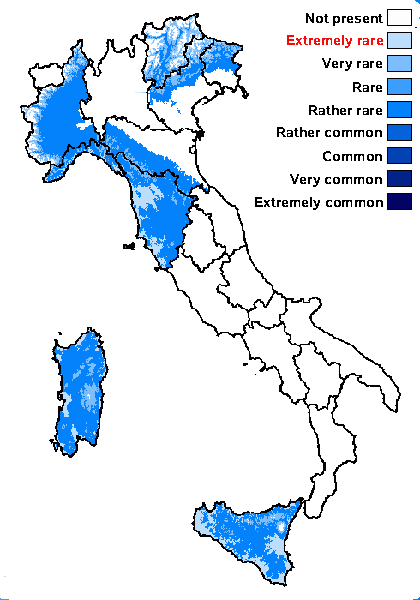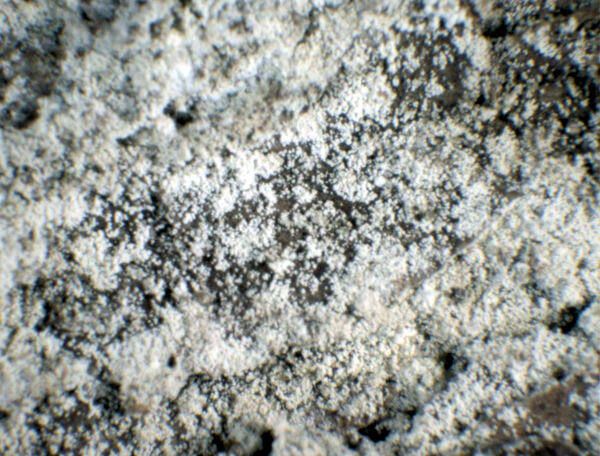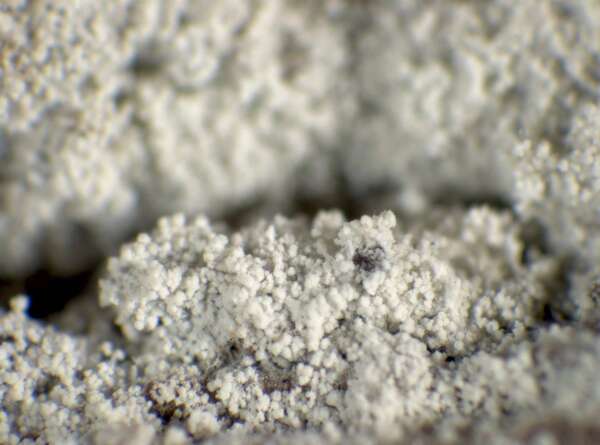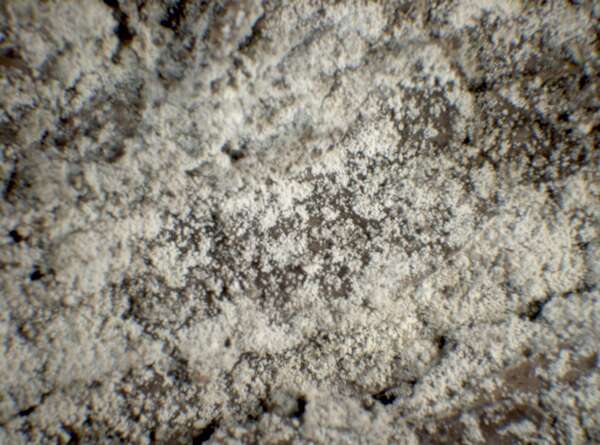Lepraria jackii Tønsberg
Sommerfeltia, 14: 200, 1992.
Synonyms: Lepraria toensbergiana Slav.-Bay. & Kukwa
Distribution: N - Frl (Kümmerling & Leuckert 1995, Austria, near the border, Baruffo & al. 2006), Ven (Baruffo & al. 2006), TAA (Nascimbene 2013, 2014, Nascimbene & al. 2014, Nascimbene & Marini 2015, Trindade & al. 2021), Piem (Baruffo & al. 2006), Emil (Baruffo & al. 2006, Fariselli & al. 2020), Lig (Baruffo & al. 2006). C - Tosc (Baruffo & al. 2006, Benesperi & al. 2007), Sar (Zedda 2000a, 2002, Baruffo & al. 2006, Cossu 2013). S - Si (Kümmerling & Leuckert 1995, Lindblom & al. 2023).
Description: Thallus leprose, consisting of a soft mass of powdery, soredia-like granules, bluish white to pale blue-grey, more or less well-delimited, but not lobed at margin. Medulla absent, the hyphae close to the substrate white, K-. Granules (19-)23-40(-60) μm in diam., sometimes gathered into up to 160 μm wide aggregates, sometimes with short (c. 10-15 μm) projecting hyphae. Photobiont chlorococcoid. Spot tests: K- or K+ faintly yellow, C-, KC-, P- or P+ weakly yellow-orange, UV-. Chemistry: atranorin and jackinic/rangiformic (major), roccellic, norjackinic/norrangiformic and toensbergianic acids (minor).Note: on the acid to subneutral bark of conifers and other trees (the record from Sardinia was on Quercus suber), especially on rain-sheltered basal parts of trunks in woodlands, but also on siliceous rocks and wood.
Growth form: Leprose
Substrata: rocks, bark, and lignum
Photobiont: green algae other than Trentepohlia
Reproductive strategy: mainly asexual, by soredia, or soredia-like structures (e.g. blastidia)
Commonnes-rarity: (info)
Alpine belt: absent
Subalpine belt: extremely rare
Oromediterranean belt: absent
Montane belt: very rare
Submediterranean belt: rather rare
Padanian area: absent
Humid submediterranean belt: rather rare
Humid mediterranean belt: extremely rare
Dry mediterranean belt: extremely rare

Predictive model
Herbarium samples
Growth form: Leprose
Substrata: rocks, bark, and lignum
Photobiont: green algae other than Trentepohlia
Reproductive strategy: mainly asexual, by soredia, or soredia-like structures (e.g. blastidia)
Commonnes-rarity: (info)
Alpine belt: absent
Subalpine belt: extremely rare
Oromediterranean belt: absent
Montane belt: very rare
Submediterranean belt: rather rare
Padanian area: absent
Humid submediterranean belt: rather rare
Humid mediterranean belt: extremely rare
Dry mediterranean belt: extremely rare

Predictive model
| Herbarium samples |
 INDEX FUNGORUM
INDEX FUNGORUM
 GBIF
GBIF
 DOLICHENS
DOLICHENS





